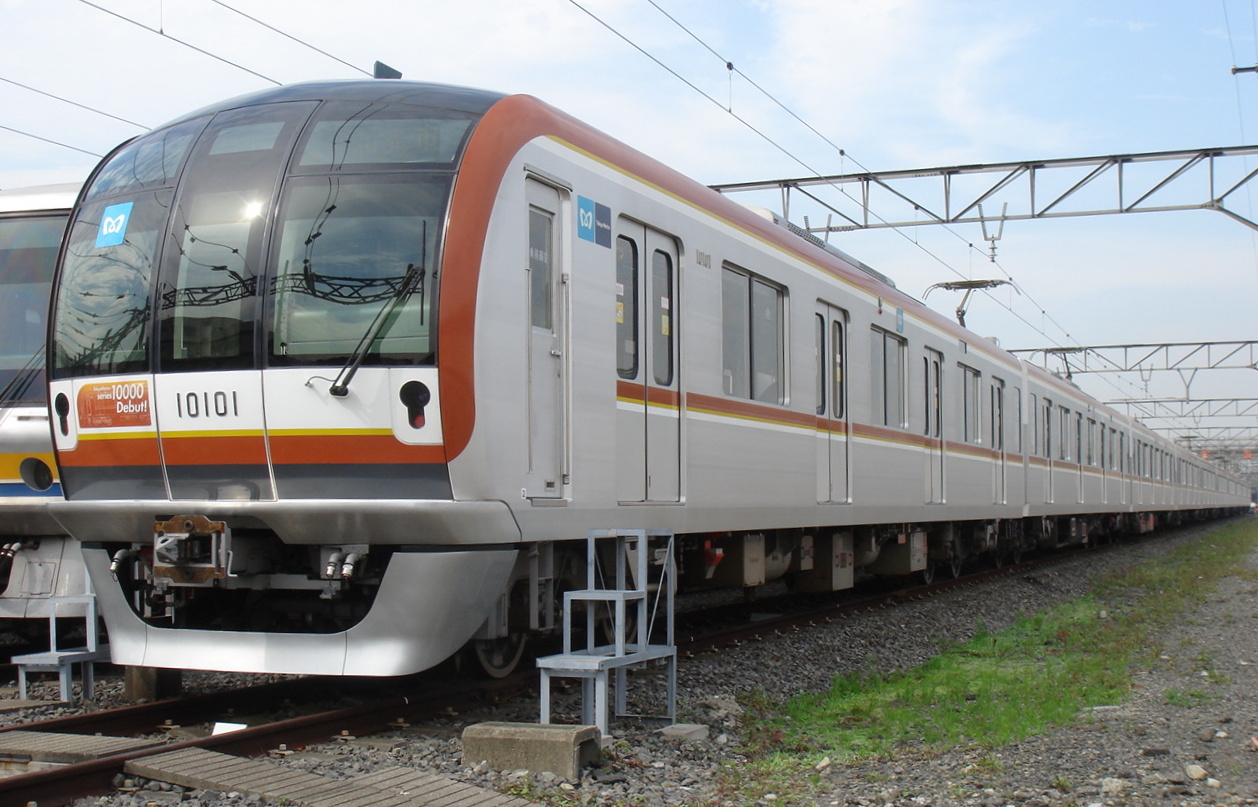- Tokyo Metro Fukutoshin Line
Infobox rail line
box_width =
name = Tokyo Metro Fukutoshin Line
color = BA6832
logo =
logo_width =

image_width =
caption =Tōkyō Metro 10000 series for use on the Fukutoshin Line
type =Rapid transit
system =
status =
locale =Tokyo
start = Wakōshi
end = Shibuya
stations = 16
routes =
ridership =
open =14 June 2008
close =
owner =Tokyo Metro
operator =
character =
depot =
stock = 7000 series, 10000 series
linelength = 20.2 km
tracklength =
notrack =
gauge = 1,067 mm
el =Overhead catenary 1,500 V DC
speed =
elevation =
map_state = ShowThe Nihongo|Tokyo Metro Fukutoshin Line|東京地下鉄副都心線|Tōkyō Chikatetsu Fukutoshin-sen, formally the Nihongo|No. 13 Fukutoshin Line|13号副都心線|Jūsangō Fukutoshin-sen, is aTokyo Metro subway line in west-centralTokyo ,Japan . The newest line in the Tokyo subway network, it opened in stages between 1994 and 2008, and is expected to be the last subway line built by Tokyo Metro for the immediate future. [http://mdn.mainichi.jp/national/archive/news/2008/06/13/20080613p2a00m0na012000c.html]History
"Fukutoshin" is Japanese for "secondary city center," and the Fukutoshin Line connects three of Tokyo's secondary city centers:
Ikebukuro ,Shinjuku and Shibuya. Prior to its opening, only JR East had rail service between the three (on theYamanote Line , theSaikyō Line and theShōnan-Shinjuku Line ). The new line was conceived to relieve congestion along this busy corridor, and to provide convenient through service between the northwest, the southwest and the central part of Tokyo served by the Yamanote Line.The line was initially planned in 1972 as a run from
Shiki, Saitama to Shinjuku, with the possibility of further extension to Shibuya, Shinagawa and Haneda Airport. In 1985, a second Ministry of Transportation committee proposed that the line terminate at Shibuya. Part of the northern end of the original plan line became unnecessary following improvements to theTōbu Tōjō Line and the beginning of through service from the Yūrakuchō Line.A 3.2 km segment from
Kotake-Mukaihara toIkebukuro , running parallel to the Yūrakuchō Line on separate tracks began operation in 1994. This segment was initially known as the Nihongo|Yūrakuchō New Line|有楽町新線|Yūrakuchō Shin-sen, and was operated with no intermediate stops.The newest segment connecting
Shinjuku and Shibuya viaZoshigaya ,Sendagaya andMeiji Shrine , opened for service onJune 14 ,2008 , officially completing the Fukutoshin Line. Service to the Senkawa and Kanamechō stations, which had been bypassed by the Yūrakuchō New Line, also started on the same day. Through services to Kawagoe-shi station on theTōbu Tōjō Line , and Hannō station on theSeibu Ikebukuro Line are offered.Technical problems resulted in delays of up to 30 minutes during the Fukutoshin Line's first few days of operation. [http://mdn.mainichi.jp/national/archive/news/2008/06/17/20080617p2a00m0na006000c.html]
Starting in 2012, the
Tōkyū Tōyoko Line will move to share the line's Shibuya terminus and offer through services on theMinatomirai Line toMotomachi-Chūkagai Station inYokohama .tations
The Fukutoshin Line is the second Tokyo Metro line to feature express services, after the Tōzai Line. Express trains pass local trains at Higashi-Shinjuku Station, where additional tracks are installed for this purpose. Local trains still stop at all stations.
Rolling stock
Tokyo Metro
*7000 series 8-car and 10-car trains
*10000 series 8-car and 10-car trainsTrains owned by other operating companies
*
Seibu 6000 series 10-car trains
*Seibu 6050 series 10-car trains
*Tōbu 9000 series 10-car trains
*Tōbu 9050 series 10-car trains
*Tōbu 50070 series 10-car trainsExternal links
* [http://www.tokyometro.jp/fukutoshin/index.html Tokyo Metro Fukutoshin Line information page] (Japanese)
References
*"Japan Railfan Magazine" July 2008 issue
Wikimedia Foundation. 2010.
